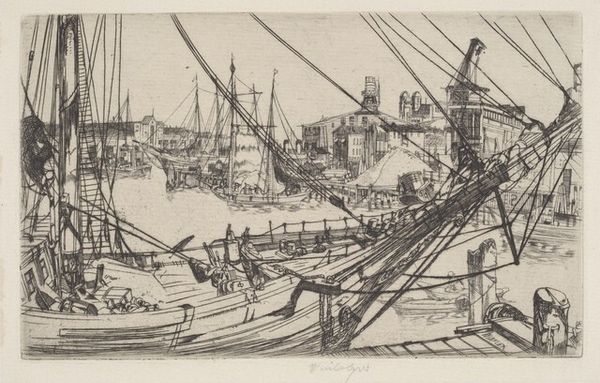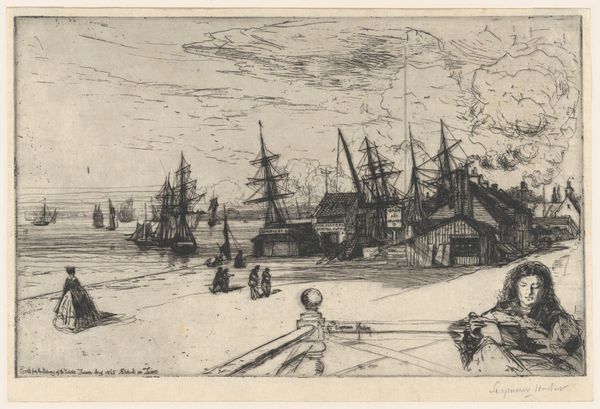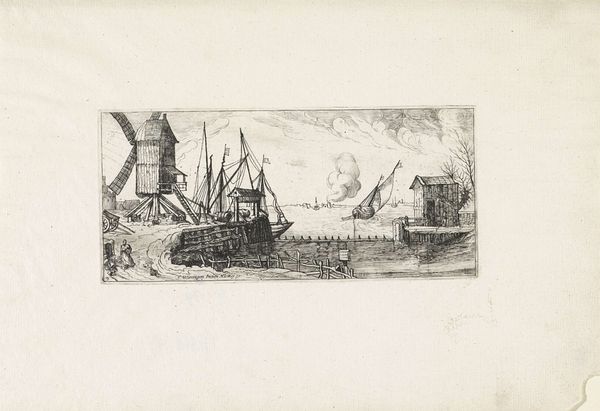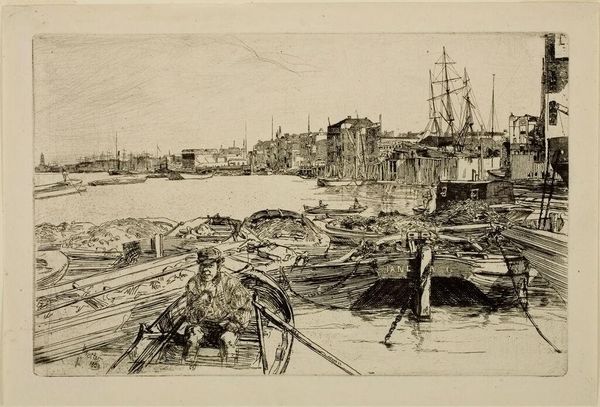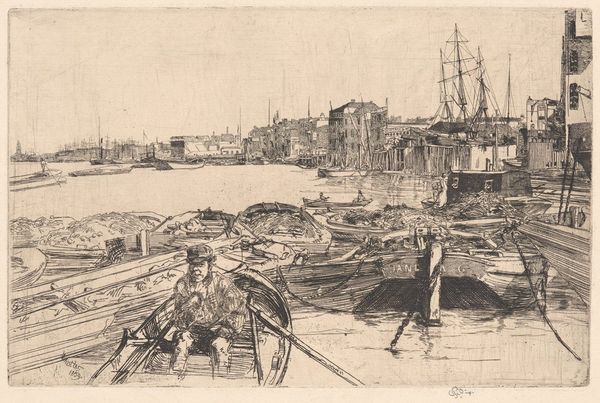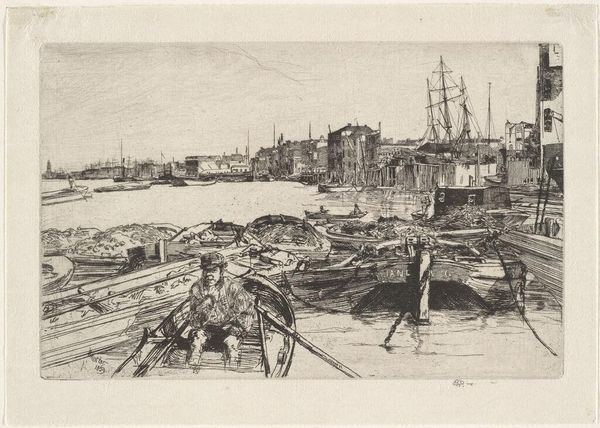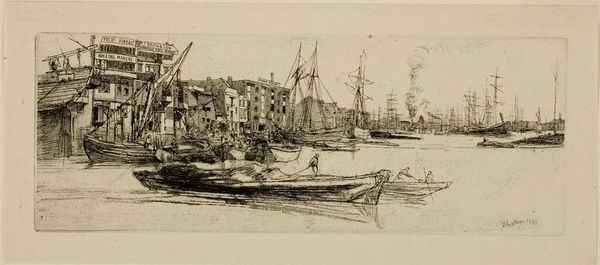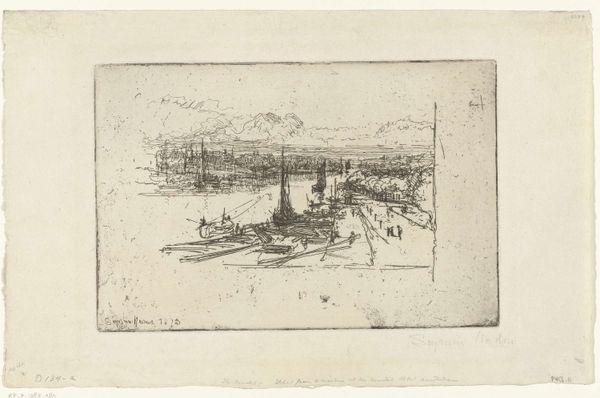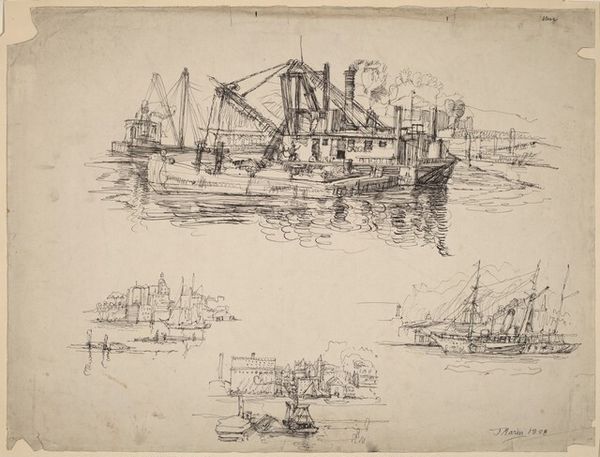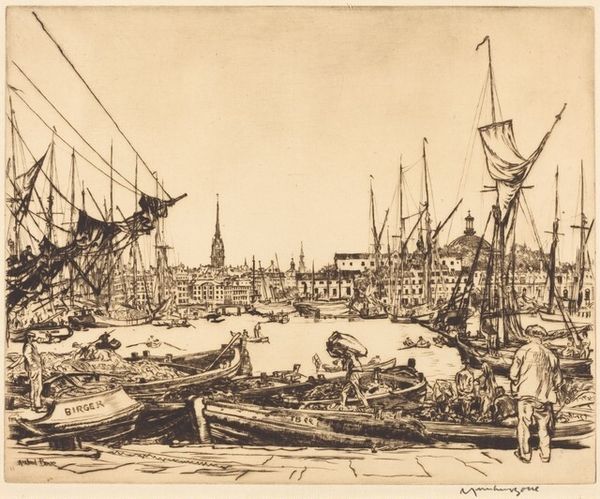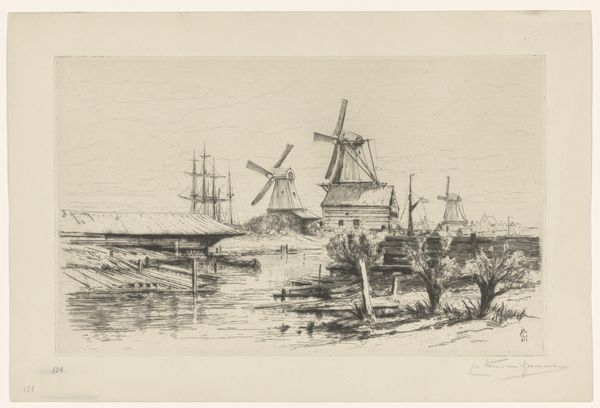
print, etching, ink
#
art-nouveau
# print
#
etching
#
landscape
#
ink
#
cityscape
#
realism
Dimensions: plate: 17.46 x 25.08 cm (6 7/8 x 9 7/8 in.) sheet: 22.54 x 34.29 cm (8 7/8 x 13 1/2 in.)
Copyright: National Gallery of Art: CC0 1.0
Curator: Welcome. Today, we’re exploring John W. Winkler's 1918 etching, "Mission Street Wharf (large plate)". Editor: There's a frenetic energy to this work, isn't there? All those lines, the way the light seems to shimmer across the water—it’s a dynamic composition for a cityscape. Curator: Absolutely. As an etching, the process itself lends to that sense of movement. Consider the labor: the artist coats a metal plate, then scratches into that surface before submerging it in acid to deepen those lines. Editor: And how meticulously those lines are worked. See the dense hatching, the cross-hatching that gives such depth to the ships and buildings, versus the far sparser lines that imply the open sky and water surface. There’s such a controlled hand evident in that contrast. Curator: Winkler's choice of subject is deliberate too. The waterfront represents labor, commerce, and industry. Each mark on the plate shows his effort and mirrors the city's production that he depicts. It’s art about work. Editor: Yes, but it's also art *in* work. Those crisscrossing lines also function to flatten pictorial space and assert the physicality of the work of art itself. It's simultaneously illusionistic and radically flat. Curator: Furthermore, understanding that this was created in 1918 – during the First World War – allows one to speculate whether the labor and material portrayed serve as more than the face value it exhibits. Editor: True. Context undoubtedly deepens our encounter. But considered on its own terms, I'm drawn to the elegance of line and the visual balance achieved between detailed foreground and subtly rendered background, the dance between order and chaos in the composition itself. Curator: For me, I look past the immediate impressions into the details and contemplate all the labor necessary to produce such images in this era. The making becomes more significant than the thing that's made. Editor: So while you connect to the tangible processes of labor, I remain absorbed in Winkler's sophisticated eye and the self-contained world he crafted through line and form, offering us the means to think about artistic agency as such.
Comments
No comments
Be the first to comment and join the conversation on the ultimate creative platform.
